Messiaen: Saint François d'Assise (Metzmacher)
Introduction
Throughout 2008, the musical world celebrated the centenary of the birth of Olivier Messiaen, one of the most immediately recognisable and influential voices of the twentieth century.
His works are famed for their rich harmonies, ravishing colour, notoriously difficult rhythms, and for much of his music, an outward epxression of his steadfast Catholic faith, none more so than the opera we see here, which took him eight years to complete.
Messiaen was never too enthusiastic about writing an opera, yet the subject was brought up again and again, mostly by others, and he gave in, but insisted on finding the right subject and writing the libretto.
It was almost certainly always going to be on a religious theme, but the Passion of Christ, or even 'just' the Resurrection were felt to be subjects to which he couldn't do justice (Messiaen described the Resurrection as something akin to an atomic explosion).
And so, Messiaen immersed himself in the works of St Francis, and those who wrote of his life a century later. He came to the conclusion that he wanted to describe the important moments of Francis's journey towards Grace rather than 'dirty' himself with having to write about his life before conversion, and this probably suited the composer better, as he probably suspected he was approaching the end of his own life.
The final work consists of three acts, divided into eight scenes, or Tableaux.
1 - The Cross
2 - Lauds
3 - The Kissing of the Leper
4 - The Journeying Angel
5 - The Angel-Musician
6 - The Sermon to the Birds
7 - The Stigmata
8 - Death and the New Life
Audio
The sounds produced by the forces necessary to produce this work (around 110 in the orchestra with a 150-piece chorus) are immense, and the DVD recording copes fantastically. I thought that a speaker or two would explode during some of the bass drum sections, but the effect is incredible.
The balance between the singers and orchestra is exemplary considering the band is on the same level, but much is also down to Messiaen's masterly orchestration which rarely, if ever, threatens to overpower the voices.
Video
The video quality and cemera work is great. With the amount of people on the stage, we are still aware of the 'chamber' qualities of the work (also alluded to during one of the annoyingly short extras).
The amazing set and lighting by Jean Kalman is captured impressively, and there is no problem at all in the darker scenes.
Extras
The extras are useful, but a little disappointing on the timings. A quite interesting chat with the children involved reveals that they really don't like Messiaen's music and find it difficult understanding what's going on, but three items adding up to not much more than 12 minutes is not a lot considering the importance, and indeed length of the opera.
Conclusion
I didn't discover Messiaen's music until very late on in my formative years, and it took quiet a while to appreciate what he was up to...a bit longer still to actually 'like' the stuff. It wasn't until a couple of excellent TV documentaries in the 80s, a student performance of Et Expecto..., and a cracking live performance of Turangalîla at the Proms when everything fell into place, slowly. I think the problem was, without trying to sound too pretentious, that I tried to understand the music (a big problem when you're a music student) rather than just let it happen to me.
In a way, the music of St. Francis contains snippets of everything Messiaen had produced before, but developed into a hugely satisfying whole.
His sense of musical colour is well documented, not least due to a form of synaesthesia from which he created previously unheard sounds, and for which he could describe in great detail how he 'saw' a particular chord :
"blue-violet rocks, speckled with little grey cubes, cobalt blue, deep Prussian blue, highlighted by a bit of violet-purple, gold, red, ruby, and stars of mauve, black and white. Blue-violet is dominant"
Hearing some of this music, you begin to see what he means.
Then there is the drama.
Much of the dramatic nature of this work takes place within Francis as he battles to understand how he can come closer to his God and achieve a state of Grace. Much of the music is therefore highly reflective, with the silences often speaking louder than the music itself, so sections such as the Angel knocking at the door, and the Stigmata appear like the aforementioned explosion Messiaen likened to the Resurrection.
Jean Kalman's set is powerful, yet bleak and colourless for the most part, using scaffolding and various piles of crosses and trees to reflect things that most likely went right over my head.
Where colour is used, it is as stunning as some of the orchestral explosions, such as the Angel's outfit when playing the heavenly music to Francis. The sermon to the birds (an excellent use of the children as the attentive avians) becomes a primary school lesson where words and pictures are scrawled over trees with marker pens, and costumes and lighting are brightened up considerably.
The chorus is used sparingly, but with shattering intensity, even in the quieter moments when they are the voice of Jesus hovering around somewhere above the earthly action.
The soloists are uniformly excellent.
Rod Gilfrey (Francis) exudes holiness like a man posessesed, and shows impressive stamina for one of the most demanding roles in the repertoire (although the filming took place over three nights, including a dress rehearsal, and so we obviously don't see the performance from beginning to end, as such).
Camilla Tilling (The Angel) is wonderful in the part, with none of the histrionics I have seen in this role from time to time. She manages to sing a frighteningly difficult part with an overwhelming aura of tranquility.
Francis's fellow brothers are a great team with Tom Randle coming across as a very cheery and kind Massée, Henk Nevin (Léon) being full of doubt and nervous energy, and Donald Kaasch (Élie) an almost misanthropic character, completely unsuited to his calling.
Hubert Delamboye as the leper rails againts his condition and the rest of the world (and probably the costume he has to wear) with an anger that is uncomfortable to watch, yet his remorse when he is cured is one of the most affecting moments you are likely to see in opera.
This is a long and uncompromising work, but one worth staying with, as by the end you feel that you have experienced something very special.
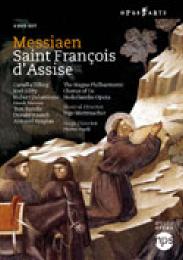
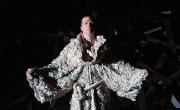
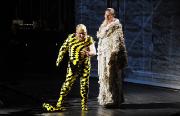
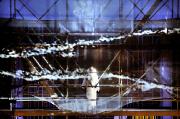
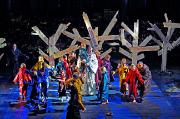
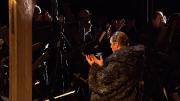
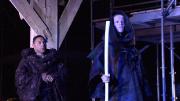

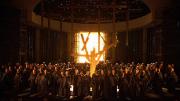


































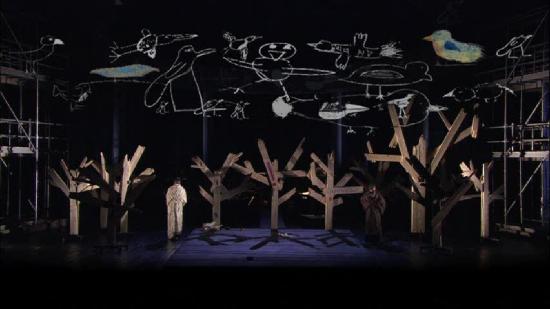
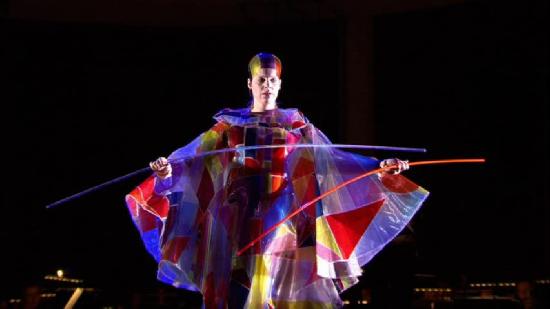


Your Opinions and Comments
Be the first to post a comment!